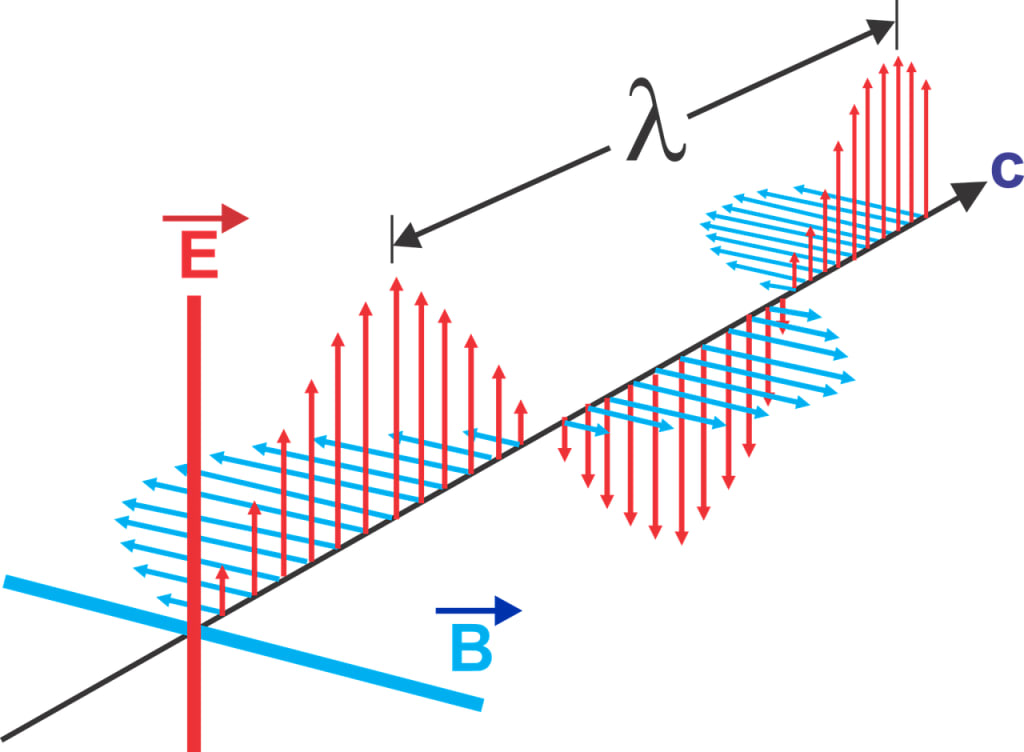Electromagnetic Energy
How Electromagnetic Energy Work

Electromagnetic Energy
Electricity and electromagnetic energy are two of the most essential forms of energy today. From powering our homes and businesses to providing a way to transmit information, they are integral parts of modern life. But what exactly is electromagnetic energy? In this post, we’ll explore the basics of electromagnetic energy, including how it works and how it affects our daily lives. We’ll also look at some of the applications of electromagnetic energy and its potential uses for the future. Read on to learn all you need to know about electromagnetic energy!
What is electromagnetic energy?
Electromagnetic energy is a form of energy that consists of electric and magnetic fields. It is present everywhere in nature, including in the visible light we see, the heat we feel from the sun, and the radio waves that connect us to our phones and the internet. Electromagnetic energy is all around us, and it has a wide variety of uses and applications.
At its most basic, electromagnetic energy is produced when an electric current is passed through a conductor. This creates an electric field around the conductor, which then creates a magnetic field. These two forces interact with each other, creating a type of energy that can be used for a variety of purposes.
The most common form of electromagnetic energy that we are exposed to on a daily basis is visible light. Light is produced when electrons in atoms move from a higher-energy state to a lower-energy state. This process produces a type of radiation that we can see. Other forms of electromagnetic radiation include ultraviolet light, X-rays, and microwaves.
Electromagnetic energy can also be used to generate electricity and power various electronic devices. For example, solar panels are devices that convert light into electrical energy.
In summary, electromagnetic energy is an all-encompassing term that describes a variety of forms of energy produced by electric and magnetic fields. It is everywhere in nature, and it has many different applications.

How does it work?
Electromagnetic energy, or EM energy, is a form of energy produced by the movement of charged particles. It is a type of energy that can move through empty space or through an object. This energy is found in the form of electrical and magnetic fields, which are created when electrical charges move through a conductor such as a wire. The electrical field produces a force that pushes on other charged particles and the magnetic field creates a force that pulls on other charged particles. These fields can interact with each other to create a wide range of phenomena, including light, heat, and radio waves.
At the atomic level, EM energy is created when atoms gain or lose electrons. Electrons are constantly in motion and as they move around, they create electric and magnetic fields. These fields interact with other charged particles and transfer energy from one atom to another.
At a larger scale, EM energy is generated by devices like power lines, cell phones, and radios. When electricity passes through these objects, it creates electric and magnetic fields that can move through the air. This energy can be used for communication and for powering our devices.
When electromagnetic energy is directed at an object, it can interact with molecules in the object and cause them to vibrate and create heat. This process is called absorption and it is what makes microwaves and radio waves useful. When EM energy passes through an object without being absorbed, it is known as transmission and this is how light travels through glass or water.
What are the benefits?
The benefits of electromagnetic energy are vast. It can be used for a variety of applications, including power generation, telecommunications, and medical imaging. It is also used to transmit information from one point to another, such as in radio and television broadcasts.
Electromagnetic energy has also been harnessed to improve energy efficiency. For example, electric motors can use electromagnetic fields to convert energy into mechanical motion more efficiently than traditional combustion engines. Similarly, smart meters can use electromagnetic energy to measure and manage energy consumption more accurately.
In addition, electromagnetic energy is a key component in solar energy production. Solar cells convert light into electrical energy through the photovoltaic effect, which relies on electromagnetic radiation. This allows solar panels to capture and store energy from the sun, which can then be used to generate electricity.
The use of electromagnetic energy also has implications for medical technology. Medical imaging techniques, such as MRI and CT scans, rely on electromagnetic radiation to create detailed images of the body’s internal organs. This helps doctors diagnose and treat diseases more accurately and effectively.
Finally, electromagnetic energy can be used for heating and cooling applications. This process, known as electromagnetic induction, uses coils to convert electrical energy into heat or cold air. This is often used in industrial settings to improve efficiency and reduce costs.

Are there any risks?
The potential risks associated with electromagnetic energy are still largely unknown. However, it is known that exposure to high levels of electromagnetic radiation can have serious health implications. This type of radiation is referred to as non-ionizing radiation and can come from a variety of sources including power lines, cell phones, and Wi-Fi routers. Prolonged exposure to this type of radiation has been linked to an increased risk of certain cancers, reproductive issues, and damage to the nervous system. Additionally, it is possible that these levels of radiation could interfere with certain medical devices such as pacemakers.
While the long-term effects of non-ionizing radiation are not fully understood, it is important to take precautions to limit your exposure. This can be done by avoiding sources of radiation where possible, such as keeping cell phones away from your body while sleeping and reducing time spent near sources of radiation such as power lines. Additionally, if you have any medical devices that are sensitive to electromagnetic energy, speak to your doctor about steps you can take to reduce your exposure.
How can I reduce my exposure?
Reducing your exposure to electromagnetic energy is possible, and there are a few steps you can take to do this. First, limit your use of cell phones and other wireless devices, as these emit radiation. When using these devices, make sure to keep them away from your head or body, as the radiation is stronger the closer it is to you.
You can also reduce the amount of radiation in your home by using an EMF shielding device or purchasing items with lower EMF ratings. Additionally, you can use shielded cables for all electrical wiring in your home and choose LED lights instead of fluorescent ones. Keeping your electronics further away from your body and sleeping on an EMF-free mattress can also help reduce your exposure.
Finally, it's important to remember that any appliance, electronic device, or lighting system emitting electric fields, magnetic fields, or radio frequencies should be monitored for safety. Taking all these precautions can help ensure you are reducing your exposure to harmful levels of electromagnetic energy.
Conclusion
Electromagnetic energy is an important part of our everyday lives, from the power that runs our appliances and gadgets to the signals that allow us to communicate with each other. It is powerful, efficient, and offers many benefits, but it can also be dangerous if not handled correctly. To protect yourself, it’s important to understand how electromagnetic energy works and how to reduce your exposure. By taking the necessary precautions, you can keep yourself and those around you safe from any potential risks.






Comments
There are no comments for this story
Be the first to respond and start the conversation.